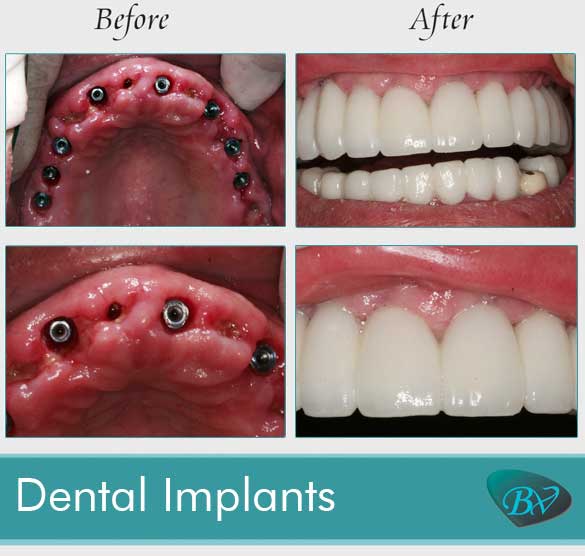10 Simple Techniques For Dental Sense
10 Simple Techniques For Dental Sense
Blog Article
The Ultimate Guide To Dental Sense
Table of ContentsThe smart Trick of Dental Sense That Nobody is Discussing3 Easy Facts About Dental Sense DescribedLittle Known Facts About Dental Sense.Dental Sense Things To Know Before You Buy
are clinical tools operatively implanted right into the jaw to recover an individual's capability to eat or their appearance. They offer assistance for fabricated (fake) teeth, such as crowns, bridges, or dentures. When a tooth is shed as a result of injury or condition, an individual can experience issues such as quick bone loss, defective speech, or adjustments to eating patterns that result in pain.Dental implant systems contain an oral implant body and dental implant abutment and may likewise consist of a joint fixation screw. Dental veneers cost. The dental implant body is operatively put in the jawbone instead of the tooth's origin. The oral implant abutment is normally connected to the implant body by the abutment addiction screw and expands via periodontals into the mouth to sustain the affixed fabricated teeth
(https://www.openstreetmap.org/user/dentalsense1)Framework of The Oral Implant System picking oral implants, speak to your oral supplier about the potential benefits and risks, and whether you are a candidate for the treatment. Things to consider: Your general health and wellness is a vital factor in figuring out whether you are an excellent candidate for oral implants, for how long it will require to recover, and for how long the implant may remain in place.
Smoking may affect the healing procedure and reduce the lasting success of the dental implant. The healing process for the implant body might take a number of months or longer, throughout which time you commonly have a short-term abutment in area of the tooth. the dental implant procedure: Very carefully adhere to the oral hygiene guidelines provided to you by your dental supplier.
Dental Sense Fundamentals Explained
Implant failure can cause the requirement for another operation to deal with or change the dental implant system. Restores the capacity to eat Restores cosmetic look Aids keep the jawbone from diminishing as a result of bone loss Preserves the health and wellness of the surrounding bone and periodontals Aids keep nearby (nearby) teeth stable Enhances quality of life Damages to surrounding all-natural teeth during implant placement Injury to the surrounding tissues throughout surgical treatment, such as sinus perforation Injury during surgery (as an example, crack of bordering jawbone) Insufficient function, such as really feeling like the teeth do not attack together generally A feeling that the tooth is loose or turning in position arising from a joint screw loosening Implant body failure (looseness of the implant body) due to systemic infection, which might be more probable in patients with unrestrained diabetics issues due to neighborhood infection in bone and gums supporting the dental implant body as a result of postponed recovery, which may be more probable in people that smoke Problem cleansing the gums around the implant, causing inadequate dental health Untreated gum disease Post-surgical tingling as a result of nerve impingement or damages Always inform healthcare carriers and imaging professionals that you have oral implants before any kind of magnetic vibration imaging (MRI) or x-ray procedures.
FDA is not knowledgeable about any type of negative events reported for MRI or x-ray procedures with dental implants. Oral implants systems are usually made of products that comply with global consensus criteria of the International Company for Standardization (ISO) or ASTM International. These standards have details of what makes a risk-free material.

An oral implant is a structure that changes a missing tooth. With screw-like tools, the specialist inserts an implant into the jawbone, and it acts as a support for an artificial tooth, called a crown.
8 Easy Facts About Dental Sense Shown
Some people are not qualified for dental implant surgical treatment. It is for oral surgeons to run on individuals with: acute illnessuncontrollable metabolic diseasebone or soft tissue condition or infectionIf these problems are settled, an individual can have the surgical procedure. In, oral specialists refrain from running on individuals with: If individuals with any one of the above undergo dental implant surgery, there is a greater threat of the dental implant stopping working.

Oral implant surgical treatment is a customized process. Offer you time to recover. Attach the post and last crown, bridge or denture.
Next off, your specialist will very carefully place the dental implant into your jaw. Lastly, your specialist will rearrange your periodontals and close the cut with stitches. If your implant is near the front of your mouth, your dental practitioner will make a momentary tooth for you to wear until you heal. In this way, you will not have a void in your smile while you recuperate.
The Ultimate Guide To Dental Sense
Your provider can inform you what to expect in your circumstance. Throughout the healing phase, your jawbone needs to fuse to the oral implant. This procedure, called osseointegration, is critical for security and long-term success. This procedure can take anywhere from three to 9 months. Sometimes, it may take longer.
As soon as your dental implant heals, your dental expert can attach the abutment (tiny port message) and your last remediation (crown, bridge or denture). This typically takes about one hour to finish and might need a 2nd minor surgical procedure. You should not really feel any type of discomfort throughout your oral implant treatment because your copyright will utilize drug to numb your gum tissues.
Report this page